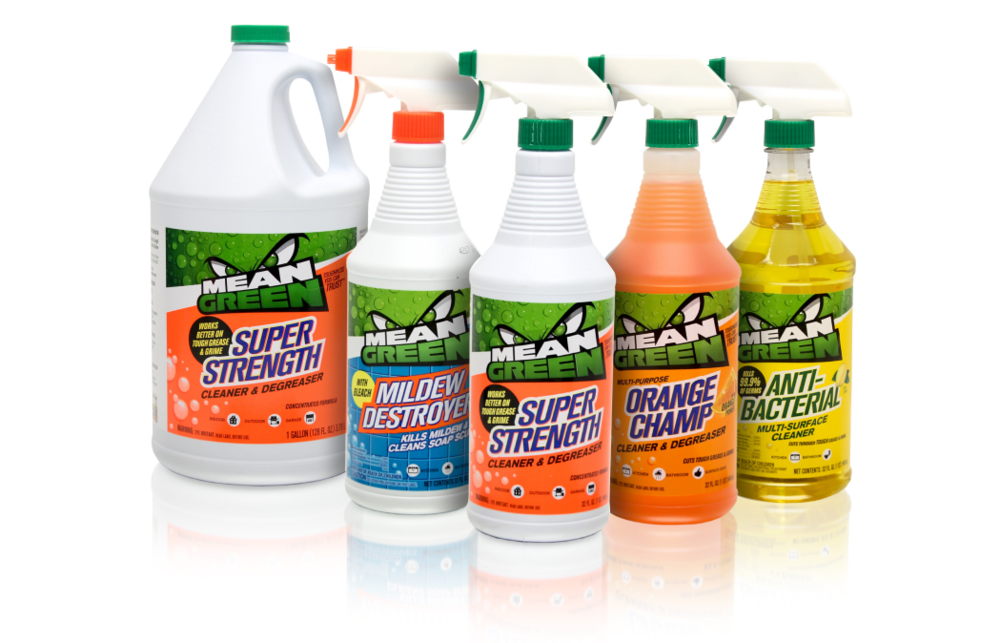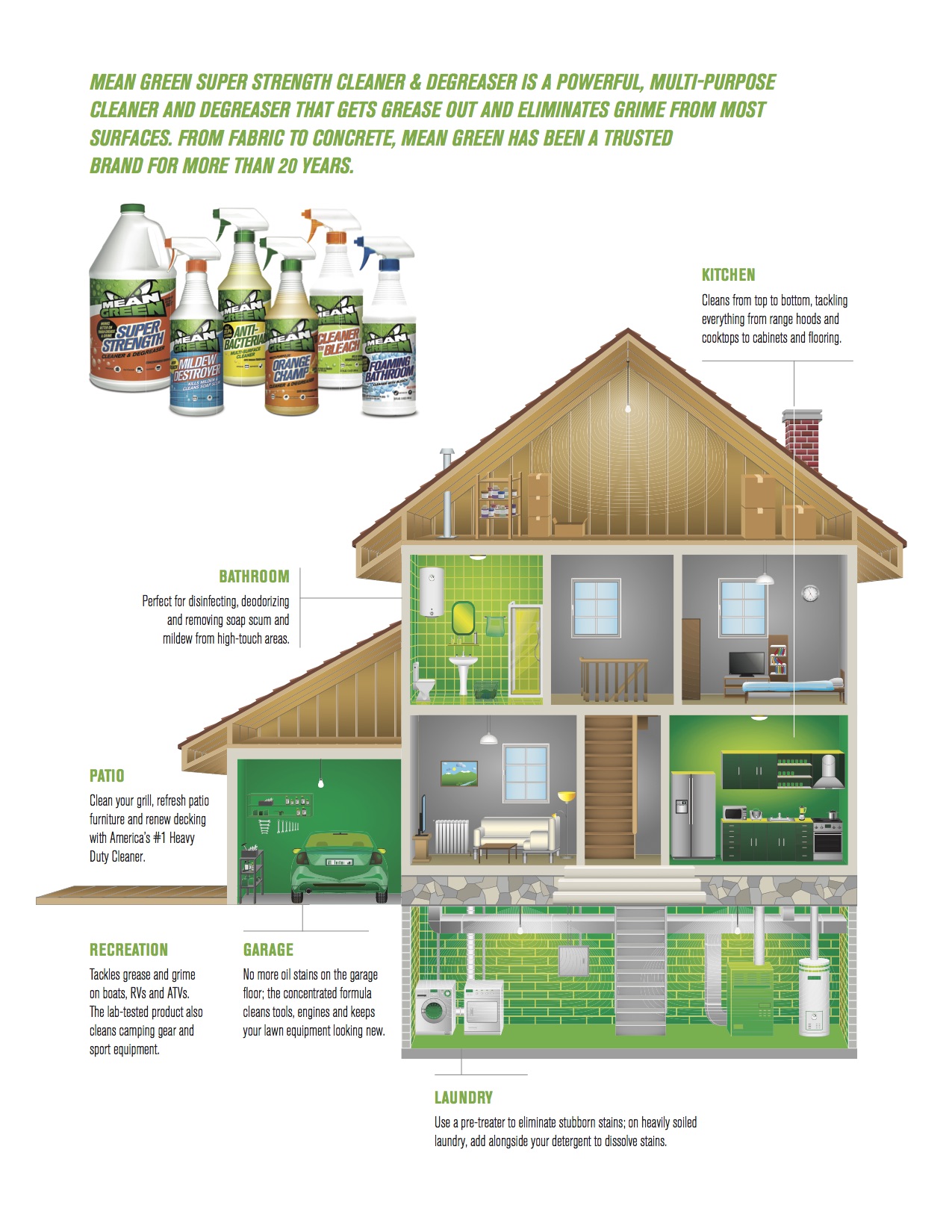
There are quite a few items in the Mean Green family of cleaning products, all of which help make your home cleaner- more quickly and easily. 2017 is going to add a few more items to its already robust line of products. These are Heavy Duty Super Strength Wipes, Auto and Garage Cleaner and Degreaser, and the Car Wash. All work great in the garage, outdoors, and so many other messes (even your car). The wipes are a favorite, being so “ready to go” and remove grease, grime, oil, adhesives, and other gross stuff with little effort. They an be used all over the home, from the garage to the kitchen to the bathroom and beyond. I would of course use a different wipe for each room…

Use by spraying down the walls and crevices after you shower, and keep mildew from growing in your bathroom. Bonus? No scrubbing required.
The Car Wash is made to work into a rich foam that removes dirt and grime, cleaning the exterior of your car easily. We tried out out the auto and garage cleaner and degreaser. This cleaning product is made specifically to cut through tough messes that gets on your car, like petroleum based grease, grime, and oil. It works on concrete, metal, tools, outdoor furniture, grills, and pretty much all outdoor surfaces you can think of as well. The Auto and Garage Cleaner definitely cuts through the grease quickly and easily, making quick work of spilled oil or fluids from a leaky car, or from a home auto repair job. This also works well at cleaning up that “fix it” corner of your garage where paint is sometimes used (and spilled), and to clean up adhesives, or fuels. This would normally take a lone time to clean, or with some special hack or trick, but now all you need is one cleaner to tame your yard and garage. Boom, hack that.

Easy to use, and effective, Mean Green works well on sinks, floors, bathtubs- and beyond. Better yet? The first time.
The entire Mean Green line are great cleaners and work great for their specific specialties. I would highly suggest grabbing a few at your local retailer.





















